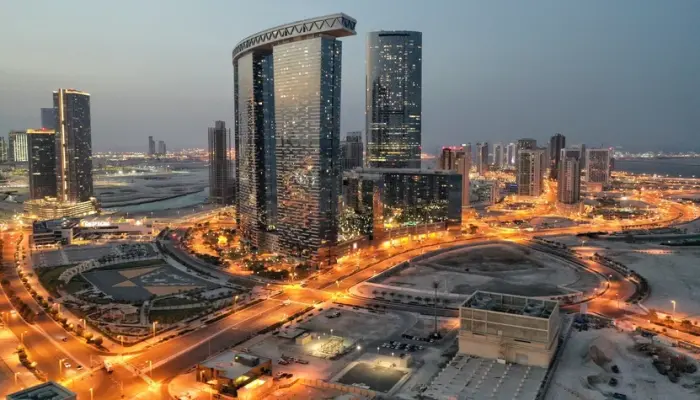The days when Abu Dhabi was overshadowed by Dubai are long gone. Dubbed the "Las Vegas of the Persian Gulf," it is considered a futuristic mosaic of cultures, refined experiences, skyscrapers, impressive buildings, and endless deserts.
A Few Words About the City
Abu Dhabi is the capital and the second-largest city in the United Arab Emirates after Dubai. The city sprawls along a narrow coastal island in the Persian Gulf, surrounded by smaller islands and bays. The etymology of the city's name is not entirely clear, although there are several theories. The most common is that the name comes from the presence of numerous gazelles in the region, known in Arabic as "dabi". The city's population exceeds 945,268 inhabitants, and the metropolitan area spans 67,340 square kilometers. Abu Dhabi also boasts one of the highest per capita income rates in the world and is considered the third most expensive city in the region and the 26th in the world! It serves as the center of political, industrial, cultural, and commercial activities, contributing 15% of the country's GDP! The city also hosts the local stock exchange, the central bank of the С, and many multinational corporations such as Etihad Airways. Finally, the Emirate of Abu Dhabi is one of the world's largest oil producers, but its economy is diverse, with developments in financial services and tourism! So, let me introduce you to Abu Dhabi through my eyes and share what I believe every first-time visitor to this city must see.
Sheikh Zayed Mosque
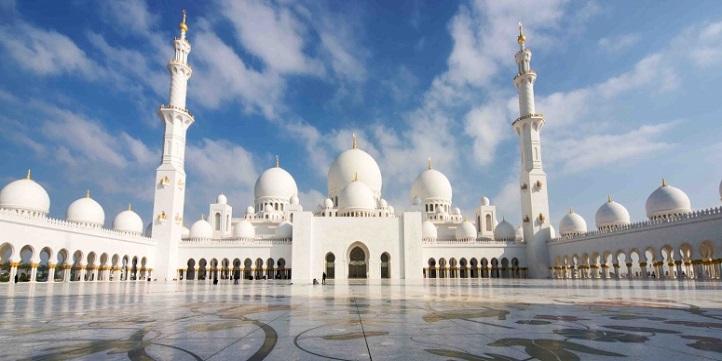
The Sheikh Zayed Mosque is the largest in the United Arab Emirates and the eighth largest in the world! It is undoubtedly the city's main attraction, drawing numerous tourists from all over the world eager to see it. Its founder and inspirer was the country's first president, Zayed bin Sultan Al Nahyan, who dreamed of creating a welcoming and cultural sanctuary that inspires people from different walks of life. By the way, the sheikh is buried on the left side of the mosque. This relatively new structure, opened only in 2007, was inspired by the Badshahi Mosque in Lahore, Pakistan. It features a central prayer hall and two other rooms next to it, one of which is exclusively for women! To grasp its scale, realize that it can accommodate up to 40,000 worshippers! Additionally, it has four minarets at its four corners, reaching a height of 106 meters, and a total of 57 domes covering the outer courtyards and the main building, made of white marble. Inside, it is adorned with unique treasures such as gilded columns, impressive Swarovski crystal chandeliers, and the world's largest carpet covering 5,627 square meters, consisting of 2,268,000,000 knots! The courtyard, which you cannot walk on, is laid out with a colorful mosaic covering about 17,000 square meters of marble! Entrance to the mosque is free, but you must pre-register online and obtain a special barcode. Finally, you must be dressed according to protocol, or you will not be allowed to enter!
Corniche
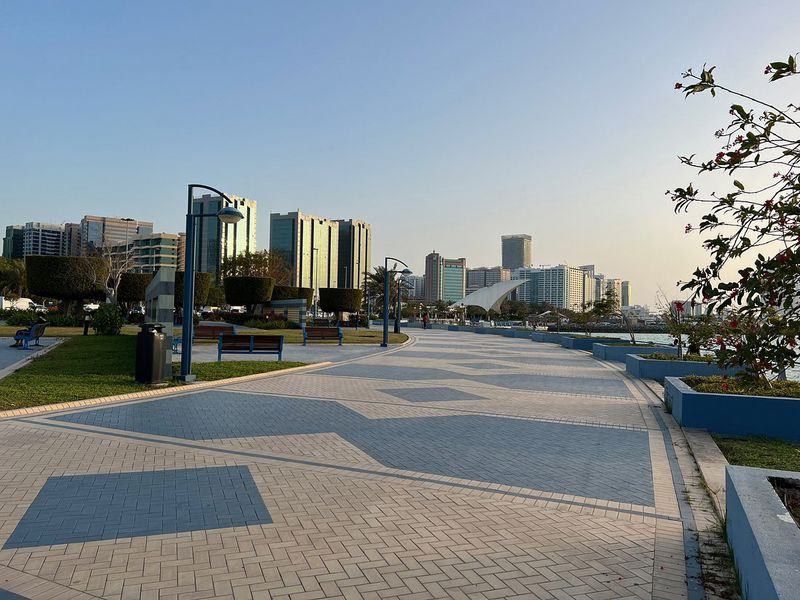
Corniche Avenue stretches along the northwest coast of Abu Dhabi for about eight kilometers. It starts from Sheraton Hotel and extends to Hilton Hotel. It's a wonderful place with parks, fountains, children's playgrounds, designated bicycle and walking paths, cafes, restaurants, and the stunning Corniche beach. The city's main beach is two kilometers long, divided into three parts. The first is called Al Sahil, ideal for youth and large groups, the second is suitable for families and has its own quiet area, and the third is also intended for families and children. The beach has been repeatedly awarded the prestigious "Blue Flag" for cleanliness, and its turquoise waters and soft white sand are sure to impress. Finally, the Corniche is the perfect place to watch the sunset over the picturesque Persian Gulf.
Cultural Village
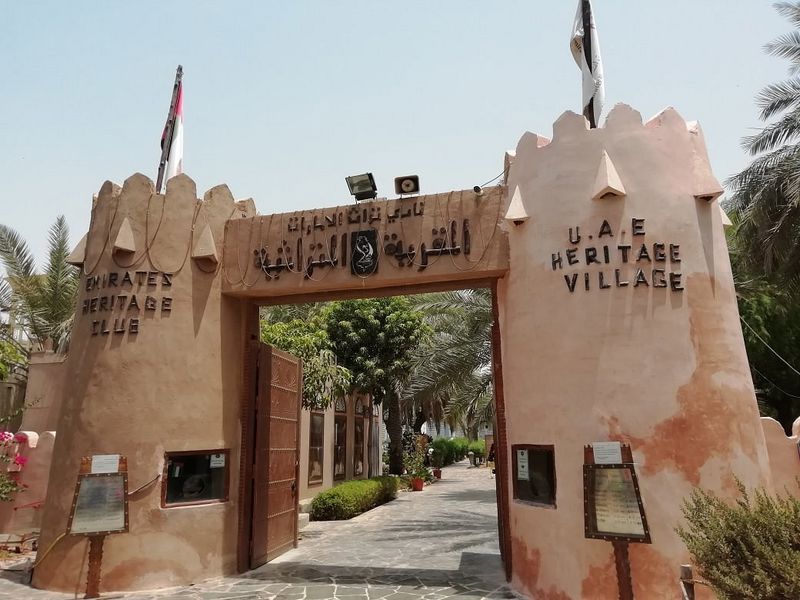
Beyond the boundless luxury, skyscrapers, impressive buildings, and vast bridges, Abu Dhabi also has traditional corners. The best place to experience the traditional way of life of the Bedouins and other desert cultures is the Cultural Village. It is located in the city center on an area of 1600 square meters and acts like a time capsule with mud brick houses, an old bazaar, mosque, and camp, showcasing life in the country before its current state. Essentially, it's a living museum where you can ride a camel, watch craftsmen make pottery, and women weave traditional clothing. Don't miss the small spice shop in the village, offering an assortment of dried herbs, handmade soap, and many souvenirs to take home to family and friends. Finally, the enchanting view of the Persian Gulf is an additional incentive to visit the Cultural Village. Entry to the village is free.
Emirates Palace Mandarin Oriental
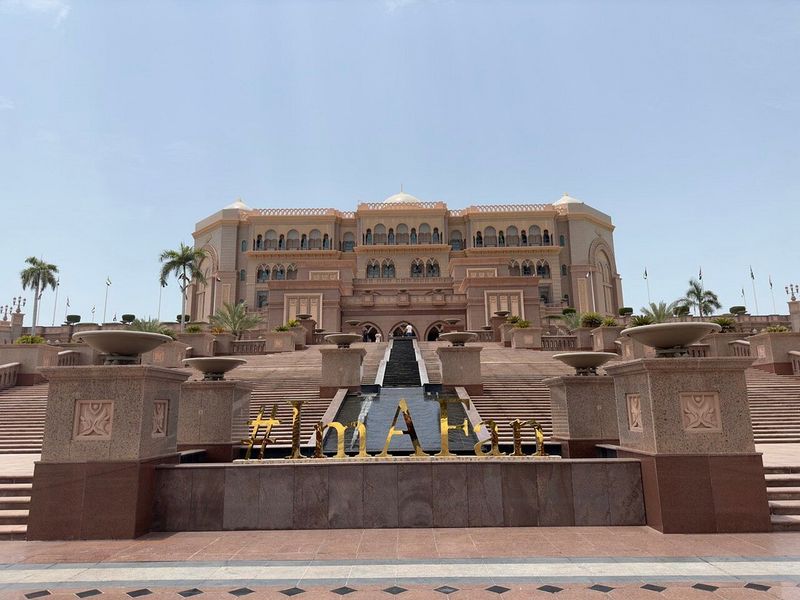
The "Emirates Palace Mandarin Oriental" is more than just a luxurious hotel. It's a real palace, spread over 100 hectares and seemingly straight out of Arabian tales. It is considered one of Abu Dhabi's main attractions due to its architecture and splendor. It has 114 domes, the central of which reaches 72.6 meters in height above the ground and is meticulously adorned with gold, pearls, and crystals! The building also has 1002 chandeliers, a private beach, impressive pools, a private marina, a natural bay, a magnificent spa, and dining areas. During the day, the palace's golden exterior contrasts with the green landscape, silver fountains, and blue sky. At night, the lighting changes, and the main dome displays an ethereal rainbow effect. In fact, a night in this five-star hotel costs over 500 euros, but it's still worth a visit to see it with your own eyes.
Louvre Abu Dhabi

Yes, you heard right - Abu Dhabi has its own Louvre! It is the first universal museum in the Arab world, aiming to cultivate a spirit of diversity and unity among cultures. It is located on the natural island of Saadiyat and occupies an area of 9200 square meters. Most of the exhibits in the museum are on loan from famous art centers around the world, such as the real Louvre in Paris, the Orsay Museum, the Pompidou Center, and many others. In addition to hundreds of famous artworks, the building itself is an attraction. It is an architectural masterpiece designed by award-winning architect Jean Nouvel and inspired by the architectural traditions of the region, where the architect plays with the elements of nature - light and water. The building's hallmark is its impressive silver dome, weighing about 7500 tons - the same as the Eiffel Tower in Paris! Since the opening of this iconic museum in Abu Dhabi, the city's art scene has reached a global level, instilling strong pride in the locals. Entry to the museum costs 60 dirhams, or about 15.5 euros.
Qasr Al Watan - Qasr al Hosn
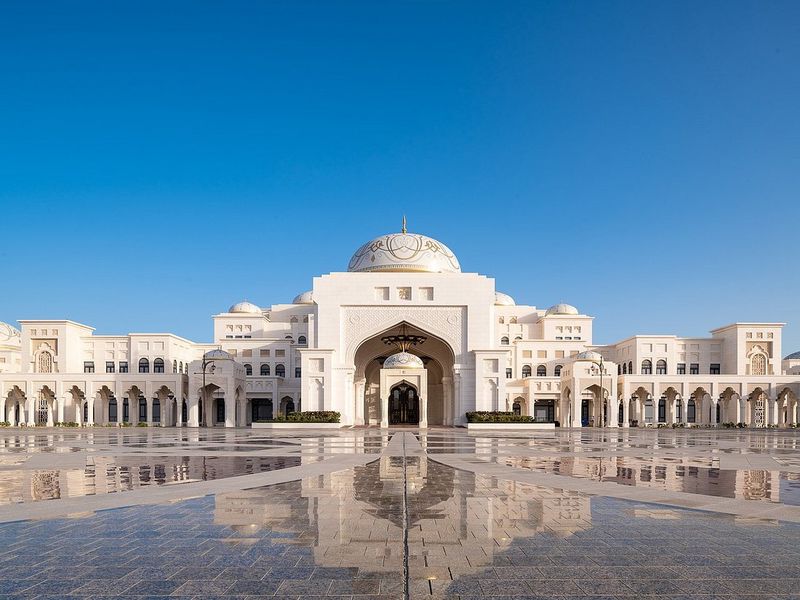
Qasr Al Watan is the presidential palace of the United Arab Emirates, located in Abu Dhabi. The construction of the palace was completed in 2017, and it opened to the public two years later. It is a majestic cultural monument, inviting visitors to discover the rich heritage of knowledge and traditions, strengthening the cultural understanding of the nation, and highlighting its amazing history. Architecturally, it features an impressive facade of white granite and limestone, and the main palace building is elegantly designed and skillfully decorated. It has a 37-meter dome, a chandelier with 350,000 crystals, and numerous apartments. The dome crowns the main hall, known as the "Great Hall," surrounded by two wings - east and west. The east wing houses the "House of Knowledge," where numerous artifacts and other significant items are kept. The west wing contains halls for official purposes, including the "Spirit of Collaboration," where the UAE Cabinet and the Federal Supreme Council will meet. Entry to the Palace of the Nation costs 65 dirhams (about 17 euros).
On the other hand, Qasr al Hosn is the oldest stone building in the city! Also known as the White Fort, it was built in the 1790s and was once the home of the ruling family. Initially, it served as a conical watchtower to protect the island's only source of fresh water in Abu Dhabi! The building also housed the National Advisory Council, established by the late Sheikh Zayed bin Sultan Al Nahyan, the founder of the UAE. In 2018, after a decade of restoration work, it was converted into a museum. Upon entering the palace, the first iconic structures you'll see are the Inner Fort, built in 1795, and the Outer Palace, built between 1939 and 1945. Here, you'll learn about the capital's history by examining artifacts and archival materials up to 6000 years old! Of particular interest is also the annual 11-day Qasr al Hosn Festival held within the fortress walls. Entry to the palace is free!
Getting There
There are currently no direct flights from Thessaloniki to Abu Dhabi. However, there are direct flights by many airlines through Athens! With proper planning, round-trip tickets starting at 180 euros can be found, combining flights from Sky Express and Wizzair!
Where to Stay
Although Abu Dhabi is considered a luxurious and expensive destination, accommodation prices are quite reasonable. Of course, there are options for all tastes and budgets, but overall finding a place to stay is not difficult. My recommendations are as follows: if you plan to stay in the city for a short time and want to be close to the airport and the mosque, choose Millennium Al Rawdah Hotel - a wonderful five-star hotel offering everything necessary. If you are looking for a downtown option, I recommend Ramada by Wyndham Abu Dhabi Downtown, located near the business district and offering clean, spacious, and fully furnished rooms.
Getting Around
In Abu Dhabi, unbearable heat prevails almost year-round, so few dare to walk. Thus, public transport and taxis become your best friends. The city has buses running in all directions, fully air-conditioned, as are the street stops! However, locals prefer personal vehicles, and tourists taxis. Taxis are relatively inexpensive and can be found all over the city. All are equipped with taximeters, and payment can be made by card. Finally, renting your own car might be a bit more expensive, but fuel is very cheap in the country, so it might end up being a cost-effective solution.
What to Eat
The Emirates' cuisine is considered multicultural. It shares similarities with the cuisines of neighboring countries such as Oman and Saudi Arabia and is influenced by various Middle Eastern and Asian culinary traditions. The main foods for locals are meat, fish, and rice. Lamb and goat meat are the most favored, while pork is not consumed for religious reasons. Dates are the country's hallmark, usually eaten after every meal. As for drinks, coffee and tea are the most popular, to which cardamom, saffron, or mint are added for a special flavor. Some of the country's most famous dishes include khuzi (lamb with rice, adorned with nuts, raisins, and vegetables), al-machbus (various meats or seafood with rice, onions, vegetables, spices, and lemon), al-harees (wheat porridge with various meats), the famous shawarma (similar to our shawarma-gyros), mhammar (spiced fish), stuffed camel (!), balaleet (a sweet-salty dish made of vermicelli with sugar, nuts, saffron, rose water, cardamom, cinnamon, pistachios, and omelet), and finally, mahalabia (pudding flavored with rose water, sprinkled with pistachios).
Useful Information
A valid passport with at least 6 months remaining is required to travel to Abu Dhabi. A visa is not required for entry into the country. Arabic is the official language in the United Arab Emirates, specifically the Gulf Arabic dialect. For tourism purposes, many know English, and everyone is willing to help if they are proficient. The country's currency is the United Arab Emirates dirham (AED), and the current exchange rate is 1 euro = 3.89 dirhams. It is recommended to exchange money in a city bank, where the lowest commission is charged, not in exchange offices! However, cards are accepted everywhere, even in taxis, so you may not need to exchange cash at all. For transportation to/from Abu Dhabi Airport, I recommend taking a taxi, as prices are quite low. There are also public buses A10, A19, A20, and A40, although few use them! The best time to travel to Abu Dhabi is in the fall or winter, when temperatures are moderate.
